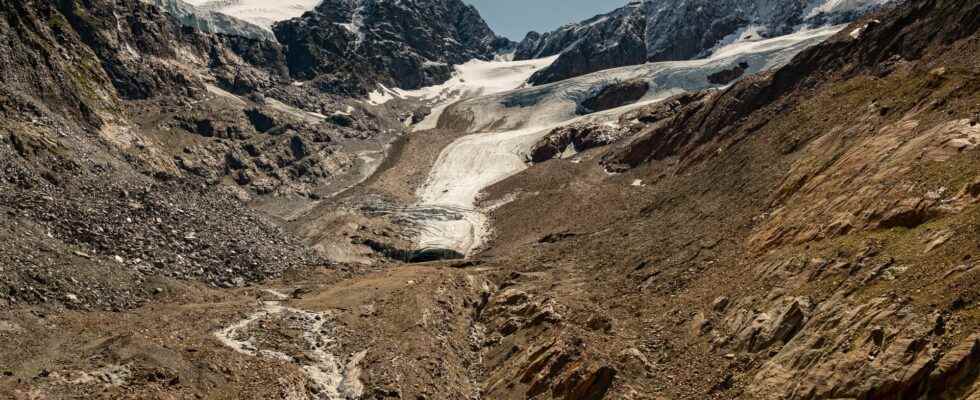Ice cream with no future
Putting all factors together paints a depressing picture for the future. “Model simulations make it clear that there will be further losses from the glaciers,” says ETH glaciologist Daniel Farinotti. “Even if the 1.5 degree target is reached, the Alpine glaciers would lose around 60 percent of their total volume by the end of the century.” “For the glaciers of the Alps, every half a degree that we slow down the warming really counts,” says the researcher.
Five of them are in Germany, their fate seems inevitable. “In the 2030s they will probably all have disappeared,” says Christoph Mayer from the Bavarian Academy of Sciences. The Höllentalferner in the west of the Wetterstein Mountains will probably last the longest. “It is largely fed by avalanches and is partly in a steep valley and therefore in the shade.”
However, unlike the larger and higher-lying ice masses in neighboring countries, the five German glaciers are only temporary phenomena in the history of the earth. Since the end of the last Ice Age 18,000 years ago, the glaciers in today’s Bavaria have probably disappeared and returned several times, says Mayer. “Perhaps they were not present in the climatic optimum of the Middle Ages and only formed in the Little Ice Age from the 15th century.” Thanks to their retreat, it might be possible to narrow down the time of their origin. “Perhaps we can find wood that can be dated using dendrochronology or C14 methods, then we can tell when the vegetation was displaced by the ice.”
© Manuel Schwarz / dpa / picture alliance (detail)
Broken glacier on the Marmolada | Since the deadly ice fall on the Marmolada, public awareness of the vulnerability of the Alps to climate change has also increased.
Glacier archeology could make significant discoveries in the years of melting, just think of »Ötzi«. But it has to be quick. “Mostly organic material is exposed,” says Mayer. “It decomposes quickly and must be recorded quickly.” The Bavarian Academy of Sciences therefore wants to expand this research more in order to be on site quickly when finds are found and to learn a lot from them. In addition to the – possible – successes for archeology, the glacier shrinkage brings considerable problems. “Glaciers cool their surroundings,” says Mayer. »If they are missing, it gets warmer, which affects flora and fauna.« The water balance of the mountains is also changing, as was already observed this summer: the Lech hardly carried any water, and in places people hiked on the river bed. “The river was empty because there are only small glaciers upstream,” explains the researcher. The Inn is completely different. “It was full because there are large glaciers in its catchment area and they supplied a lot of meltwater in the summer.”
future without ice
As with the Inn, glaciers provide sufficient water in many places. “They deliver when it’s particularly needed: in the summer,” says Farinotti. For agriculture, for cooling power plants, for hydroelectric power plants. “The inner valleys of Valais and the Rhone Valley are particularly vulnerable, they still get enough glacial water, it will be drier there in the future.”
The thawing affects not only the glaciers, but the entire subsoil in the high mountains. According to Farinotti, this can affect stability and increase the risk of rockfalls. “The landscape will change a lot, it will increasingly resemble the Dolomites,” he says. “Where the glaciers give way, hundreds of lakes will appear by 2100.” They could be new destinations for tourism, which also has to adapt.
